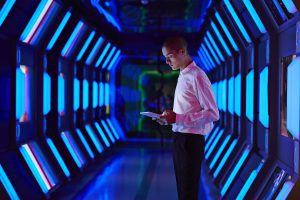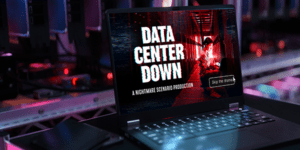The IT landscape is littered with examples of failed software deployments and enterprise software applications that are not delivering their expected benefits. According to the Standish Group’s Annual CHAOS 2020 report, 66% of technology projects ended in partial and total failure, based on the analysis of 50,000 projects, globally. They also found that 31% of U.S. IT projects were cancelled completely and the ongoing performance of 53% “was so worrying that they were challenged.” In 2020, research by McKinsey found that 17% of large IT projects progress so badly, that they have a high potential risk of threatening the very viability of the company. These trends continue today, but it’s not all gloom and doom.
Although I keep coming back to a few nagging questions: why do a significant number of software projects fail during deployment, and, if they are installed correctly, why do they fail to perform or operate at maximum efficiency? Why do they end up providing little to no benefit to the business, and, more importantly, to the application users themselves?
Let’s leave the why software projects fail during deployment question for another day and focus on underperforming or underutilized software applications, which may be poorly designed and functioning, their impact on operational efficiency and user productivity, and how this experience can be avoided.

EcoStruxure IT Software, eLearning program, and Education Services team
As humans, we interact with the software application using our senses, through interfaces, or we derive an output from the software that we use to make decisions. We use our experiences, personal filters, biases, technical skills, and competencies to consolidate, interpret, analyze, and sometimes estimate (maybe guess) the value of what we are seeing or experiencing to determine the derived benefit. Our understanding of, and practical application of the “derived value” to our decision-making and choices is where the balance between art and science happens.
Education and training sit at the core of knowledge. They allow us to improve our understanding of what, how, and why we can drive higher levels of software utilization, creating more efficient operational outcomes, derived value, and benefits. We assume too often that we “are good to go” after completing the training, but research shows that retention and application of the training content can and does take time, necessitating the need for ongoing education and reinforcement.
That’s why we have our EcoStruxure IT Software, eLearning program, and Education Services team to help customers and partners improve software utilization and adoption. This knowledge is provided as an experiential learning experience for end-users and administrators of EcoStruxure IT Software applications such as IT Advisor, Data Center Expert, and NetBotz. This offer is in addition to our standard, face-to-face instructor-led or virtual classroom delivery options. The focus is on gaining and using knowledge of the software functions over the medium to long term as opposed to one-off training sessions for specific topics.
Value for EcoStruxure IT customers and partners
I want to share why we implemented EcoStruxure IT Software experiential learning methodology and the value it holds for EcoStruxure IT customers and partners. The Oxford Dictionary defines knowledge as “facts, information, and skills acquired through experience or education; the theoretical or practical understanding of a subject,” and “awareness or familiarity gained by experience of a fact or situation.” Think of the facts and information provided by the software and the skills, experience, and practical understanding provided by humans. These elements of knowledge come together at a point where a decision is made, in this case regarding efficiency. The art of gaining efficiency is balancing the elements so that software functionality and human-software interaction are maximized to increase the utilization of the software, and a better derived value and benefit.
The scenario of learning to drive a car for the first time is a good analogy. At the start it’s all new, we need to learn the technical aspects of correct driving, what the controls do, how to steer and corner correctly and more. As we complete more time in the car, we start to become more proficient and driving actions become second nature.
The most effective way to improve software utilization is to improve the knowledge of the people using the software. It’s more cost-effective to upskill current users than it is to train new users, as training budgets are put under pressure, and current users are already familiar with some of the software’s functionality. When I say knowledge, I don’t mean training, as training by itself is the process of learning a specific skill that you need to carry out an activity or job. Knowledge includes learning and skills gained through training, but also user understanding, awareness, comprehension, and life experiences.
Start using software more effectively
As hybrid IT infrastructure and the evolution of “data centers everywhere” become the norm, the need for greater knowledge of how to utilize software more effectively, like Schneider Electric EcoStruxure IT DCIM applications becomes more critical.
Knowledge is at the core of software utilization, getting the right balance between software functionality and user adoption is the art. Contact an expert, to organize a complimentary consultation on your EcoStruxure IT Software education and training needs. Take advantage of our self-paced eLearning education courses and maximise your DCIM benefits.




Add a comment